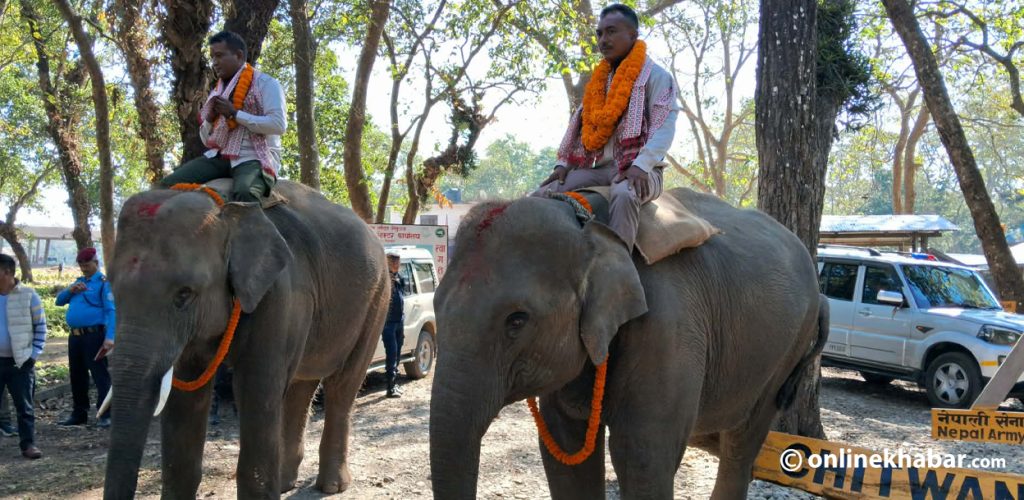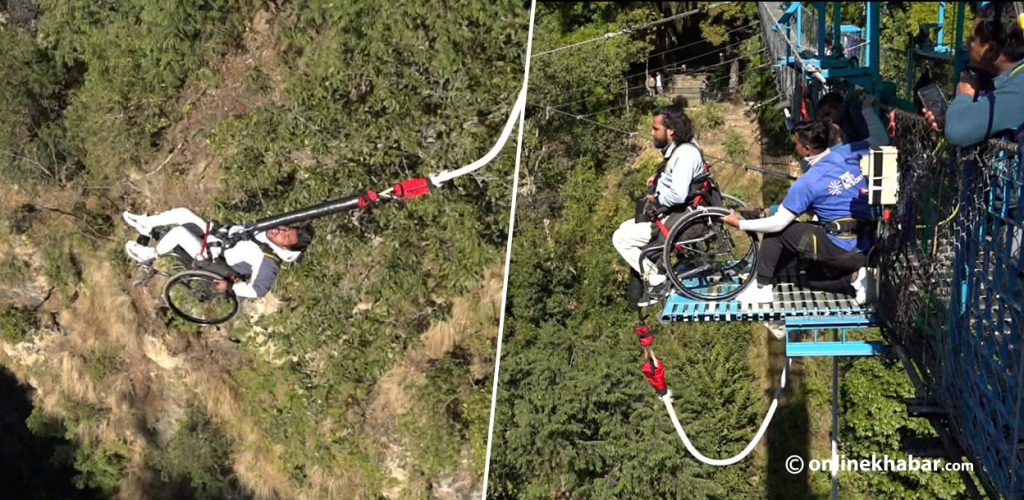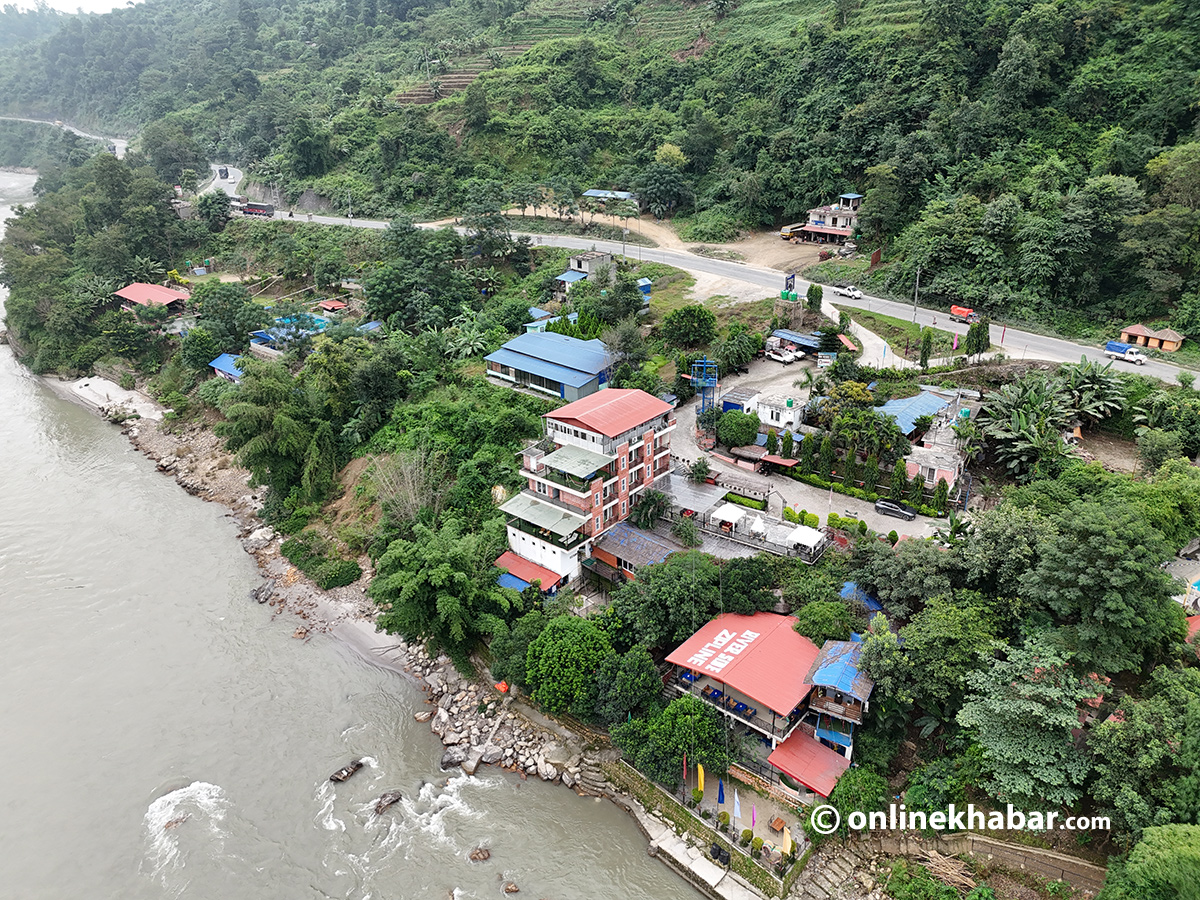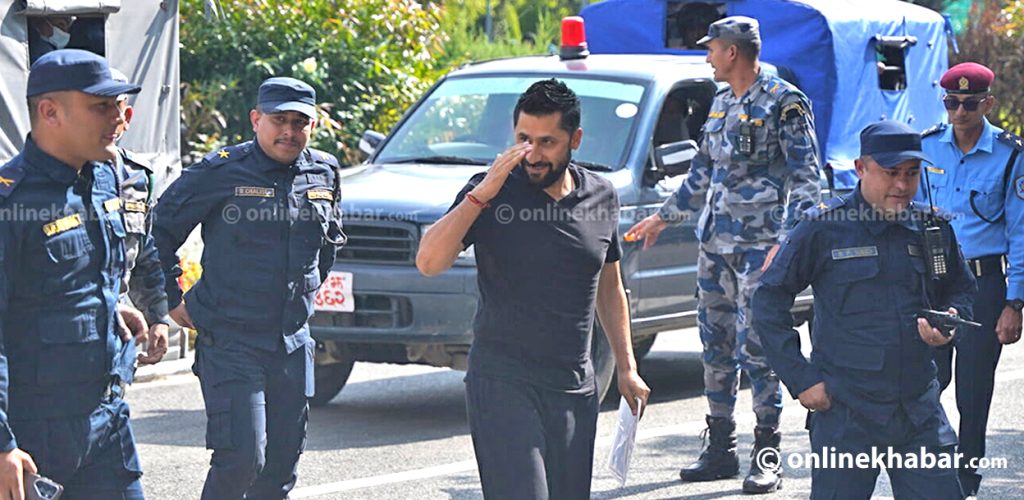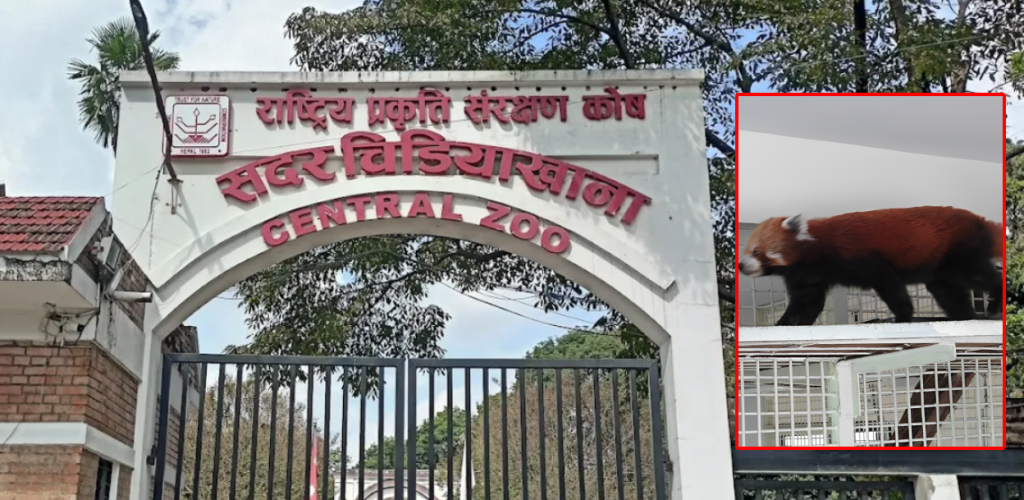
A rare red panda that survived two attempted thefts from Nepal’s only national zoo has died, prompting a joint investigation into alleged staff negligence and suspected illegal wildlife trafficking networks.
The animal, one of an estimated 500 red pandas left in the wild in Nepal, died on Saturday inside the Central Zoo in Jawalakhel, Lalitpur, where it had been undergoing treatment following months of trauma and stress.
“It died inside the hospital facility at the zoo. We’re still waiting for the postmortem results,” an official from Lalitpur District Police Office told Onlinekhabar. “Our investigation is still ongoing.”
The red panda which is known for its shy temperament and endangered status, had been rescued from illegal captivity in Rolpa district by Nepal’s National Trust for Nature Conservation (NTNC) in 2015.
It had lived in the Central Zoo ever since, until a recent surge of threats to its safety revealed troubling gaps in the facility’s security.
‘Severely stressed’ after theft attempts
According to Satyanarayan Shah, chief of the Central Zoo, the red panda had shown signs of psychological distress and physical illness since two consecutive attempted thefts, the most recent occurring on 13 May.
“It was extremely scared after the attempt, and then started showing signs of kidney problems. It stopped eating properly,” Shah said. “We did everything we could.”
Zoo staff and police now face tough questions about how two attempted thefts of a protected species could take place within a supposedly secure government-run facility.
A three-member committee formed by NTNC, led by senior official Hari Bikram Singh, had already begun probing staff negligence after the second incident when news of the red panda’s death came to light.
NTNC sources say preliminary findings suggest lapses in protocol and security surveillance, including non-functioning CCTV systems in key enclosures.
“We were finalizing the report when the red panda died,” one official told, requesting anonymity as the probe is ongoing.
Organized wildlife crime?
The red panda’s death has re-focused attention on Nepal’s role as a hub in the illegal wildlife trade. According to police, the suspects in the May incident had carried out surveillance of the zoo and its enclosures before attempting to smuggle the animal out in a backpack.
Police have arrested two suspects in connection with the incident: Mohammad Tafik, a 26-year-old Indian national, and Krishna Gurung, 21, from Dhading district. Both were arrested from the Swayambhu area of Kathmandu, where authorities also recovered a bag allegedly used in the theft and a sample of the red panda’s fur.
“Tafik had already secured a buyer before the theft,” said an officer involved in the investigation. “He entered the zoo multiple times under the guise of sightseeing to scout the area.”
Investigators say the suspects knew which security cameras weren’t functioning and returned days later with a detailed escape plan. On the night of the second attempt, they bought entry tickets, hid near the zoo’s canteen, and waited until security staff had left. They placed the animal into a bag. But the red panda cried out, attracting staff.
“When our team reached the enclosure, the red panda wasn’t there. It was later found hiding in a nearby bamboo patch,” SSP Shyam Krishna Adhikari, chief of Lalitpur police, said. “That’s when we launched a full-scale investigation.”
The buyer remains at large though police say identity has been revealed. According to Police, the price for the red panda was fixed around 500,000 INR.
Vulnerable species under threat
Native to the eastern Himalayas, red pandas are protected under Nepali law and listed as endangered by the International Union for Conservation of Nature (IUCN).
Found in high-altitude forests dense with bamboo, they face mounting threats from habitat loss, climate change, and poaching.
Nepal’s forests are estimated to host just 500 of the animals, making them specially vulnerable to trafficking networks that cater to the illegal pet trade and exotic animal collectors.
“This isn’t just about one red panda,” said a official at NTNC who asked not to be named. “It’s about the gaps in our institutions, the vulnerabilities in enforcement, and the persistence of criminal demand for rare wildlife.”
NTNC officials say they are cooperating fully with police and continuing their internal inquiry into whether staff at the zoo enabled or failed to prevent the theft attempts.
Zoo director Shah, who was in China at the time of the second incident, said the idea that an organised gang could infiltrate the zoo was previously unthinkable. “We never imagined something like this would happen inside our own premises,” he said.
Meanwhile, activists and conservationists are calling for stronger enforcement, routine audits of captive wildlife facilities, and stricter accountability for government-run institutions.
“This should be a wake-up call,” says an expert at NTNC. “If an endangered species can’t be safe inside a zoo, where can it be safe?”










